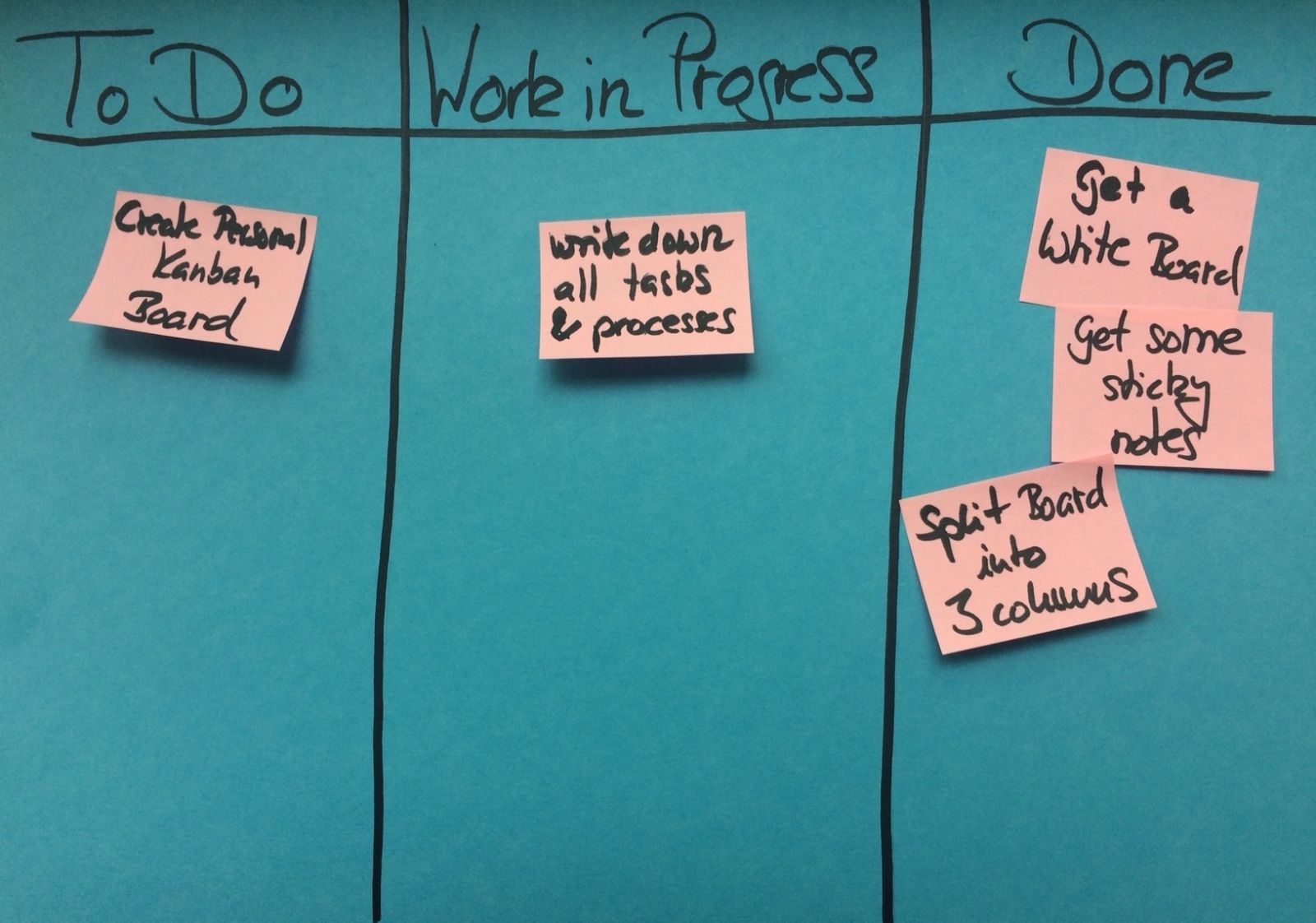What is Kanban?
Kanban – sometimes translated as “signboard”, “billboard” or “visual signal” – is a workflow management method with a long history. Invented in the 1940s as a way to improve manufacturing productivity, it has since been implemented with great success in many types of projects to visualize and manage processes. In 2007, David J Anderson expanded and improved that approach to make it suitable for knowledge workers.
One of the main ways the Kanban Method differs from traditional work management methods is that it is a pull system. In a push system, management pushes tasks onto a team regardless of their current work burden. A Kanban pull system, in comparison, means that the team pulls through new work when they have the capacity to handle it. This results in a more efficient workflow, faster delivery times, and increased customer satisfaction.

Key characteristics of a Kanban team
So what exactly makes a team a Kanban team? The most prominent characteristics that define the Kanban Method are:
- The workflow, and the progress of tasks through the workflow, is shown visually
- Workflows are split into process states (e.g. “To-Do”, “Doing”, “Done”)
- Scope of work is split into individual tasks
- Work in Progress (WIP) is limited to a certain number of work items at any time
- Output and flow metrics are measured
Let’s take a closer look at how each of these characteristics apply to Kanban teams in practice.
Visualizing Workflow
The visual nature of Kanban makes it incredibly effective for both teams and project managers – the visualization of the workflow lets Kanban teams know their priorities and project managers to check tasks status. The Kanban board is the central component of this strategy.
Physical boards are still used by some Kanban teams – having this visual aid prominently displayed in a workspace means each team member could check project status with ease. However, as modern teams combine multiple department roles or are physically separated, digital solutions have become the norm. Many teams use Trello, a simple, user-friendly project management tool to get started with Kanban.
States and Tasks
For a Kanban board to function effectively, both states and tasks must be clearly defined. Think about your workflow – what states does a work item or task move through from client request to completion? Are there any states where approval or documentation is needed to proceed? Some teams use a process flowchart to define these states and then map them to a Kanban board.

Splitting scope into tasks is equally important in Kanban. Tasks should represent a real customer value and they should be individually releasable. Kanban teams base their delivery commitments on past performance only. This makes for fast and accurate project forecasting.
Limiting Work in Progress
When do you feel most efficient – when you can focus on one thing at a time, or when you have multiple tasks piling up on your plate?
Possibly the most important aspect of the Kanban method is the Work In Progress (WIP) limit. This means your team don’t pull through any new work item from the “To-Do” state until they have the capacity to do so. This keeps work moving quickly through the pipeline, reduces lead times, and stops work in progress building up.
Optimizing the WIP limit is fundamentally important for Kanban teams. We highly recommend trying different WIP limits to find which ones work best for your projects. A good starting point is 1-2 items less than the number of people in your team.
Tracking & Analysing Kanban Metrics
Kanban is a data-driven project management method. By consistently tracking team performance, this data can be used to spot issues as they arise and make accurate predictions for future delivery dates. We’ve already mentioned that Kanban is visual – analyzing the essential Kanban metrics is no different.












Replies to This Discussion